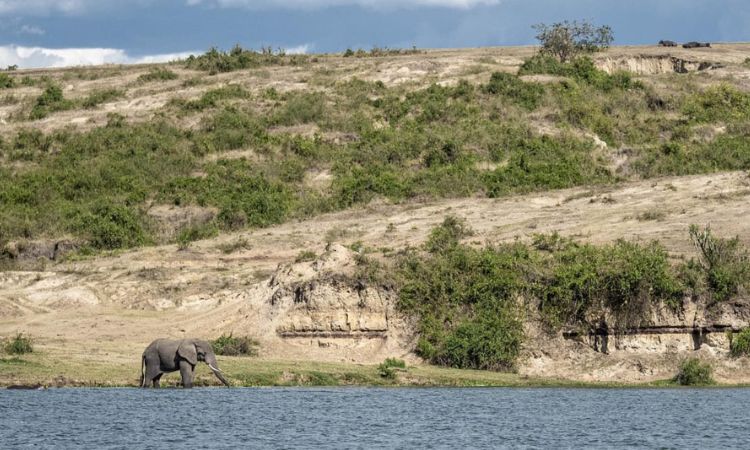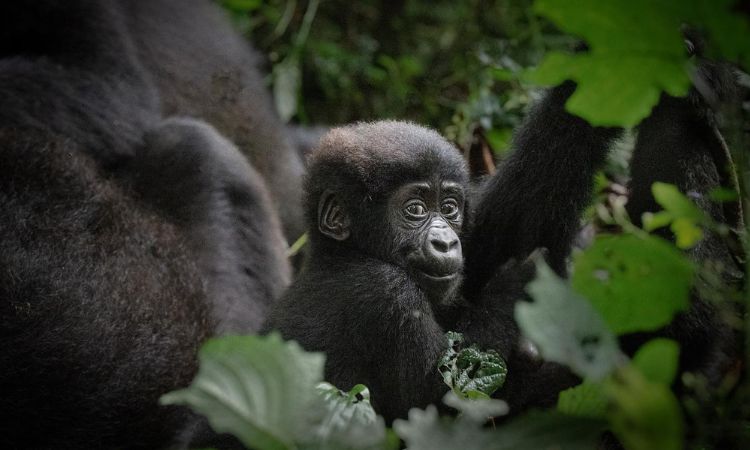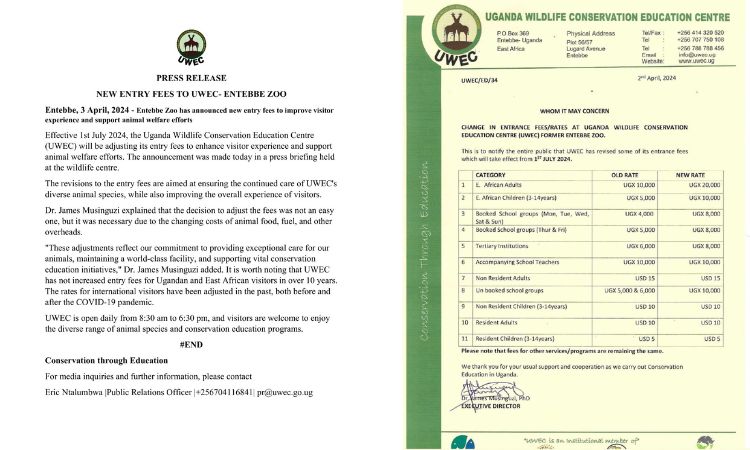Best Time to Go Gorilla Trekking in Africa 2026 – Weather, Permits & Tips
Discover the best time to go gorilla trekking in Africa, including optimal seasons for Uganda, Rwanda, and DRC. This guide covers gorilla trekking weather and climate, permit availability, and essential tips for an unforgettable adventure.
Gorilla trekking in Africa offers one of the planet’s most profound wildlife encounters, allowing you to observe endangered mountain gorillas in their natural habitats.
Primarily found in Uganda’s Bwindi Impenetrable Forest and Mgahinga Gorilla National Park, Rwanda’s Volcanoes National Park, and the Democratic Republic of Congo’s Virunga National Park, these treks immerse you in misty rainforests teeming with biodiversity.
But the best time to go gorilla trekking in Africa in 2026 hinges on weather, trail conditions, and crowd levels—factors that can transform a challenging hike into a magical, photograph-worthy experience.
Choosing the right season ensures drier paths, clearer gorilla sightings, and smoother logistics, especially with 2026’s anticipated surge in eco-tourism.
This comprehensive guide focuses on 2026 travel seasons, permit bookings, and insider advice to help you plan a seamless trip. Whether you’re eyeing gorilla trekking in Uganda or Rwanda’s lush volcanoes, read on for tailored recommendations.
Gorilla Trekking Seasons in Africa
Gorilla trekking is available year-round in Africa, but the experience varies dramatically by season due to the region’s equatorial climate.
East and Central Africa feature two dry seasons and two rainy periods, influencing everything from trail accessibility to vegetation density. Understanding these gorilla trekking seasons in Africa is key to maximizing your 2026 adventure.
The long dry season spans June to September, bringing sunny days and minimal rainfall—ideal for hiking. The short dry season runs December to February, offering crisp mornings and vibrant wildlife activity.
Conversely, the long rainy season from March to May brings heavy downpours that swell rivers and muddle paths, while the short rainy season in October to November delivers lighter showers and fewer crowds.
For a quick overview, here’s a table comparing months, weather, and trail conditions for gorilla trekking in 2026:
|
Month |
Season |
Weather & Climate |
Trail Conditions |
|
January–February |
Short Dry |
Sunny, 15–25°C, low humidity |
Dry, easy access, minimal mud |
|
March–May |
Long Rainy |
Frequent heavy rains, 18–22°C |
Slippery, overgrown vegetation |
|
June–September |
Long Dry |
Warm days, cool nights, 16–24°C |
Firm paths, excellent visibility |
|
October–November |
Short Rainy |
Intermittent showers, 17–23°C |
Moderately muddy, lush greenery |
|
December |
Short Dry |
Clear skies, festive warmth |
Accessible, post-rain recovery |
This breakdown highlights why aligning your trip with dry season gorilla trekking can elevate your journey, though rainy periods offer unique, budget-friendly perks.

Best Months for Gorilla Trekking in 2026
For the ultimate gorilla trekking experience in 2026, prioritize the dry seasons: June to September and December 2026 to February 2027.
These months provide easier hiking conditions, superior visibility for spotting gorilla families, and reliable access roads—crucial in remote parks like Bwindi or Virunga.
Why these windows? Dry weather minimizes trail erosion, reducing slip risks and allowing deeper forest penetration.
Photography enthusiasts will appreciate the diffused light and sparse foliage, revealing gorillas against stunning backdrops. Plus, with global travel rebounding post-2025, early booking is essential to secure spots amid rising demand.
Here’s a month-by-month guide for 2026, tailored to when to visit gorillas:
- January–February 2026: Peak short dry season with great visibility and fewer crowds than holidays. Expect vibrant birdlife and cooperative gorillas basking in sunlight. Ideal for first-timers seeking gorilla trekking tips without peak-season hustle.
- March–May 2026: Rainy season gorilla trekking shines for affordability—permits drop 20–30%—and lush, emerald forests that feel otherworldly. Trails are tougher, but the solitude amplifies intimate encounters.
- June–September 2026: The undisputed best time for gorilla trekking in Uganda and Rwanda. Golden-hour hikes yield epic photos, and wildlife viewing extends to golden monkeys and elephants. Book 9–12 months ahead for this high-demand window.
- October–November 2026: Transitional short rains mean fewer tourists and good prices, with trails recovering from dry spells. It’s a sweet spot for adventurous souls embracing light drizzle for dramatic, misty shots.
- December 2026: Festive clear weather pairs perfectly with holiday vibes. Shorter treks (1–3 hours) reward with relaxed gorilla interactions, making it excellent for family trips or combining with safaris.
By syncing with these best months, you’ll dodge the worst of the rainy season gorilla trekking challenges while capitalizing on prime conditions.
Best Country for Gorilla Trekking in 2026
Africa’s gorilla heartlands—Uganda, Rwanda, and DRC—each offer distinct flavors of adventure in 2026. Uganda edges out as the top pick for value and variety, with Bwindi hosting over half the world’s mountain gorillas across 20+ families.
Its scenic, rolling trails in Bwindi and Mgahinga provide diverse hikes, from moderate to strenuous, at a fraction of Rwanda’s cost.
Rwanda’s Volcanoes National Park delivers a premium, streamlined experience, with easier access from Kigali’s airport (just 2–3 hours away).
Expect luxurious lodges and habituated gorilla groups in bamboo-rich slopes—perfect for Rwanda gorilla trekking season 2026 enthusiasts prioritizing comfort.
For thrill-seekers, DRC’s Virunga National Park in the Congo offers raw adventure amid active volcanoes, with fewer crowds but higher risks. Safety has improved by 2026, but monitor updates via official sources.
Gorilla trekking in Uganda 2026 wins for most travelers: more families, cheaper entry, and seamless extensions to savanna safaris.
|
Country |
Key Parks |
Pros for 2026 |
Cons |
|
Uganda |
Bwindi, Mgahinga |
Affordable, diverse families, scenic |
Longer drives from Entebbe |
|
Rwanda |
Volcanoes NP |
Quick access, luxury options |
Higher costs, stricter rules |
|
DRC |
Virunga NP |
Budget-friendly, uncrowded |
Security concerns, remoteness |
Whichever you choose, 2026’s enhanced park infrastructure promises smoother gorilla trekking seasons Africa-wide.

How Weather Affects Gorilla Trekking
Gorilla trekking weather and climate in 2026 will dictate your immersion level. Dry seasons mean low rainfall (under 50mm/month), firm trails, and open views—gorillas forage predictably in undergrowth.
Rainy months, however, usher 200+mm downpours, turning paths into mudslides and thickening vegetation, which can obscure sightings.
Yet, gorillas don’t migrate far; rangers track them daily, rain or shine. Heavy rains might extend treks by an hour for detours, but the payoff is witnessing silverbacks unfazed by showers.
Visibility dips in dense, wet foliage, challenging photographers, but misty atmospheres create ethereal backdrops. For 2026, climate forecasts predict standard patterns, though El Niño remnants could tweak October rains—pack layers regardless.
When to Book Gorilla Permits for 2026
Securing gorilla permits is non-negotiable for 2026 treks—book 6–12 months in advance, especially for June–September peaks. Rwanda’s permits cost $1,500 per person via the Rwanda Development Board, capping daily trekkers at 96 for sustainability.
Uganda’s Uganda Wildlife Authority offers $800 permits for Bwindi , with higher quotas across families. DRC’s Virunga keeps it adventurous at ~$400, bookable through park officials. Pro tip: Bundle with lodges for packages starting at $2,500 total. Early birds snag the best dates—don’t delay!
Pros and Cons of Trekking in Dry vs Rainy Seasons
|
Season |
Pros |
Cons |
|
Dry Season |
Easier trekking, clear views, less mud |
Higher prices, more tourists |
|
Rainy Season |
Cheaper permits, lush scenery |
Slippery trails, unpredictable rain |
Dry wins for accessibility, but rainy suits budget explorers craving solitude.
Wildlife and Photography in Each Season
Dry seasons excel for gorilla trekking photography tips 2026: soft morning light pierces thinner canopies, highlighting silverback poses and playful juveniles.
Wildlife bonuses include birds flitting in clearer air. Rainy periods amp up drama—water droplets on fur glisten, and denser forests frame gorillas like living sculptures, though low light demands fast lenses.
The best time to photograph gorillas? June mornings in Uganda, when mist lifts for golden-hour magic. Always use ethical zoom; rangers enforce 7-meter distances.
Expert Tips for Planning a 2026 Gorilla Trekking Safari
Elevate your 2026 trip with these gorilla trekking tips:
- Book Early: Lock permits via official sites; aim for mid-week slots to avoid crowds—check our budget gorilla trekking safaris.
- Gear Up: Waterproof boots, ponchos, and insect repellent are musts
- Base Smart: Stay at park-edge lodges like Sanctuary Gorilla Forest Camp for dawn starts.
- Guide Wisdom: Opt for certified locals who spot nuances, like gorilla vocalizations.
- Extend the Magic: Pair with Queen Elizabeth NP safaris in Uganda or Akagera NP in Rwanda for big-five bonuses.
These steps ensure a low-impact, high-reward safari.
FAQs about Gorilla Trekking in 2026
Is May 2026 good for gorilla trekking?
Yes, but expect rainy season challenges—slippery trails offset by cheaper permits and verdant views. Great for hardy adventurers.
What month is best for gorilla trekking in Uganda?
June–September 2026: Dry paths in Bwindi yield prime sightings and photography.
Can I trek gorillas in Rwanda in January 2026?
Absolutely—short dry season means clear weather and easy Volcanoes NP access from Kigali.
When is the cheapest time for gorilla trekking in 2026?
March–May or October–November; Uganda’s $800 permits shine for value.
Final Thoughts
The best time to go gorilla trekking in Africa in 2026? June–September for dry-season bliss, or December–February for crowd-free wonder. With weather, permits, and planning aligned, you’ll forge bonds with these gentle giants amid irreplaceable beauty.
Advance bookings are your ticket to this bucket-list thrill—start planning your 2026 gorilla trekking adventure today. Contact us for permit bookings and personalized safari packages to make it unforgettable.



